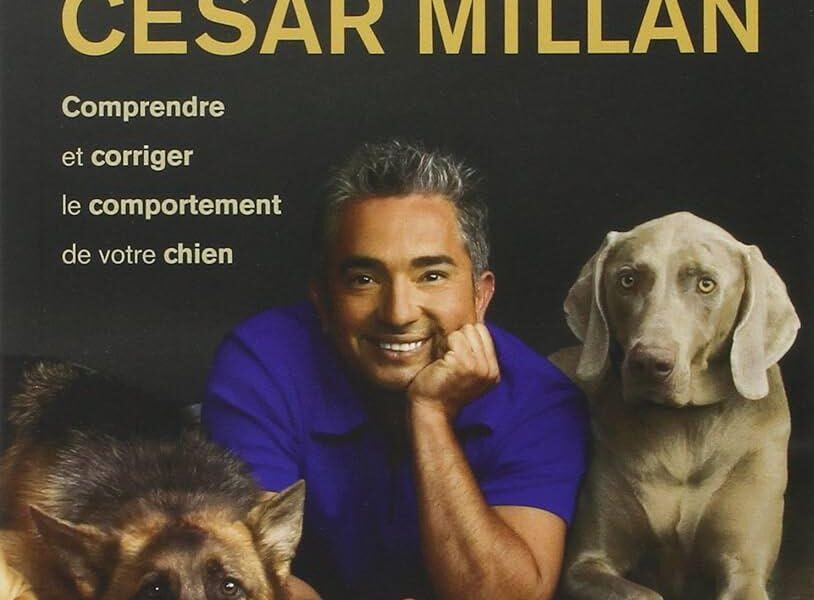Unlocking the Leash: The Art of Cesar Millan’s Training Techniques
In the world of dog training, few names resonate as powerfully as that of Cesar Millan, the “Dog Whisperer.” With his unique approach that combines intuition, discipline, and a deep understanding of canine behavior, Millan has transformed the way we interact with our four-legged companions. Among his many methods, leash training stands out as a pivotal component in establishing a harmonious relationship between owner and pet. This article delves into the essence of Cesar Millan’s leash training techniques, exploring how they not only foster better obedience but also enrich the bond between dogs and their humans. Whether you are a seasoned dog owner or a newcomer to the realm of canine companionship, understanding these strategies can empower you to navigate walks with confidence and ease, turning every outing into an opportunity for connection and communication.
Table of Contents
- Understanding the Philosophy Behind Leash Training with Cesar Millan
- Essential Techniques for Achieving Control and Confidence
- Common Challenges in Leash Training and How to Overcome Them
- The Importance of Consistency and Patience in Training Sessions
- Q&A
- Future Outlook
Understanding the Philosophy Behind Leash Training with Cesar Millan
Leash training is not merely a process of teaching your dog to walk politely by your side; it embodies a philosophy that centers around understanding the canine mind and establishing a harmonious relationship between owner and pet. Cesar Millan emphasizes the importance of energy, asserting that a dog’s behavior is a reflection of its surroundings. By projecting calm, assertive energy, owners can guide their dogs effectively, teaching them not only to follow physical commands but also to embrace a mental state of discipline and respect. This training method focuses on the connection between the dog and the owner, fostering trust and communication, which are essential for a well-behaved companion.
Incorporating the concept of the “pack leader,” Cesar advocates for an approach that encourages dogs to view their humans as members of their pack, thereby instilling a natural hierarchy. This idea is essential in leash training, as it helps prevent unwanted behaviors such as pulling or lunging. Key components that contribute to successful leash training include:
- Consistency: Regular practices breed familiarity and comfort.
- Patience: Allowing time for your dog to learn at its own pace avoids frustration.
- Positive Reinforcement: Rewarding good behavior nurtures cooperation and builds confidence.
Essential Techniques for Achieving Control and Confidence
To achieve control and confidence in leash training your dog, it’s crucial to establish a strong foundation built on understanding your dog’s behavior and body language. The first step is to create a positive association with the leash. Start by letting your dog explore the leash while rewarding them with treats or praise, turning it into an enjoyable experience rather than a source of stress. Once your pup is comfortable, practice “loose leash walking.” This technique involves:
- Keeping the leash slack: Hold the leash in a way that allows your dog to roam without pulling.
- Using verbal cues: Incorporate commands like “heel” or “let’s go” to guide your dog effectively.
- Stopping when pulling occurs: If your dog pulls, stop walking until they return to your side, reinforcing the idea that pulling gets them nowhere.
Consistency and patience are key elements in this training process. To track progress and create structured training sessions, consider incorporating a simple monitoring table:
| Session | Duration | Behavior Observed |
|---|---|---|
| 1 | 10 minutes | Excited but responsive |
| 2 | 15 minutes | Started pulling frequently |
| 3 | 20 minutes | Improved loose leash walking |
This kind of documentation not only encourages you to remain consistent but also allows you to witness firsthand the improvements your dog makes over time. Reinforce their success regularly, and you’ll find that both you and your furry friend will enjoy the training journey while building a stronger bond.
Common Challenges in Leash Training and How to Overcome Them
Leash training can often feel overwhelming, especially for new pet owners or those dealing with particularly energetic dogs. A few common challenges include pulling, where the dog tugs on the leash, and distractions, such as other animals or people that divert your dog’s attention. These behaviors not only make walks less enjoyable but can also lead to potential safety issues. To tackle pulling, consider employing techniques such as the stop-and-go method, where you stop walking whenever your dog pulls, effectively teaching them that pulling won’t get them where they want to go. Consistency is key; using a firm, calm voice to command your dog to return to your side can help reinforce good behavior.
Another challenge many face is the dog’s tendency to react to stimuli, which can be tackled through proper desensitization techniques. Begin by identifying the specific triggers that cause your dog to react, such as bicycles or other dogs. Then, create a controlled environment to expose your dog gradually, allowing them to become accustomed without overwhelming them. Using positive reinforcement, such as treats or praise, can help establish a positive association with these triggers. Remember to maintain patience and be prepared for setbacks, as leash training is often a gradual process that requires ongoing dedication and adjustments to your approach.
The Importance of Consistency and Patience in Training Sessions
In any effective training program, whether for humans or animals, the significance of consistency cannot be overstated. When utilizing techniques such as Cesar Millan’s leash training, it is crucial to establish a routine that your dog can understand and rely upon. This means applying the same commands, tone, and cues across all training sessions. Consistent behavior reinforces learning and builds trust between the dog and handler. Here’s why this is essential:
- Clear Communication: Dogs thrive on understanding cues; consistency eliminates confusion.
- Behavior Reinforcement: Continuously applying the same methods helps your pet associate actions with outcomes.
- Structured Learning: A regular schedule promotes quicker adaptation and mastery of skills.
Meanwhile, patience is equally vital during the training process. Each dog is unique, responding at their own pace while absorbing new information. Cesar Millan emphasizes that taking the time to allow your pet to learn without the pressure of fast results leads to a more profound and lasting bond. Consider these points about patience:
- Improved Bonding: Allowing time fosters trust and strengthens your relationship with your dog.
- Lower Stress Levels: A relaxed training environment promotes a positive experience for both you and your dog.
- Long-Term Success: Progress achieved with patience tends to be more sustainable in the long run.
Q&A
Q&A on Cesar Millan’s Leash Training Techniques
Q1: Who is Cesar Millan and why is he well-known in the dog training world?
A1: Cesar Millan, often referred to as the “Dog Whisperer,” is a renowned dog behaviorist and trainer renowned for his unique approach to canine behavior, which emphasizes energy, discipline, and exercise. With his television show and numerous books, Millan has introduced millions to his training techniques that focus on understanding dog psychology and building a harmonious relationship between dogs and their owners.
Q2: What is the main philosophy behind Cesar Millan’s leash training?
A2: Millan’s leash training philosophy revolves around establishing a calm and assertive energy. He believes that a dog’s behavior on a leash reflects the owner’s state of mind; thus, it’s crucial for the owner to be in control and convey confidence. The goal is to create a structured environment where the dog understands its role and responsibilities, leading to better leash manners and reduced pulling or aggression.
Q3: How does Cesar Millan suggest introducing a dog to wearing a leash?
A3: To introduce a dog to a leash, Millan recommends starting in a controlled indoor environment. Allow the dog to explore the leash while rewarding it with treats and praise when it shows calm behavior. The objective is to create a positive association with the leash before proceeding to outdoor walks. This joyful introduction lays the foundation for better leash manners out and about.
Q4: What techniques does Millan use to prevent leash pulling?
A4: Millan employs techniques such as changing direction frequently while walking. If the dog begins to pull, he suggests stopping completely and waiting for the dog to return to a calm state before proceeding. By redirecting the dog’s attention and keeping the walk unpredictable, the owner can teach the dog to pay attention and remain by their side rather than pulling ahead.
Q5: Are there specific tools that Millan recommends for leash training?
A5: While Millan often emphasizes the use of a standard flat collar and a sturdy leash, he discourages the use of choke chains and prong collars as they do not address the root behavioral issues. Instead, he advocates for a gentle leader or a no-pull harness as alternatives that provide better control and comfort for the dog during training.
Q6: How does Millan address aggressive or reactive behavior on the leash?
A6: For dogs that exhibit aggression or reactivity on the leash, Millan emphasizes the importance of calm, assertive energy from the owner. He encourages owners to maintain a steady pace and not to react to the dog’s behavior with frustration. In these situations, he often suggests using controlled exposure to stimuli, gradually desensitizing the dog to its triggers while reinforcing calm behavior with treats and praise.
Q7: What role does exercise play in Cesar Millan’s training approach?
A7: Exercise is a cornerstone of Millan’s training philosophy. He believes that a well-exercised dog is a well-behaved dog. Regular physical activity helps alleviate pent-up energy, reducing unwanted behaviors such as pulling or aggression on the leash. Millan recommends incorporating structured play and exercise into the dog’s daily routine to promote mental stimulation and physical health.
Q8: How can owners ensure success with Cesar Millan’s leash training methods?
A8: Consistency, patience, and understanding are key to success with Millan’s leash training methods. Owners should practice regularly, keeping training sessions short and enjoyable. It’s vital to build a bond of trust with the dog, using positive reinforcement to encourage desired behaviors. Seeking guidance from training sessions or educational resources can also enhance the owner-dog relationship and lead to effective leash training outcomes.
Q9: Is Cesar Millan’s approach universally applicable to all dog breeds?
A9: While Millan’s principles can be beneficial for many breeds and individual dogs, it is important to remember that every dog is unique. Owners should consider their dog’s temperament, history, and specific quirks when applying these techniques. Adapting the training to fit the dog’s personality can lead to better results and a more fulfilling training experience.
Q10: Where can one learn more about Cesar Millan’s leash training techniques?
A10: To delve deeper into Cesar Millan’s leash training techniques, resources include his books, online courses, and television appearances. Exploring his official website and social media channels can provide further insights, as well as access to a community of dog owners who follow his methods. Whether through visual or written instructions, there’s a wealth of information available for those eager to enhance their dog training skills.
Future Outlook
Cesar Millan’s leash training techniques offer dog owners a fresh perspective on establishing a harmonious relationship with their pets. By emphasizing balance, discipline, and consistent communication, Millan’s approach not only transforms the way dogs respond to their leashes but also fosters a deeper bond between humans and their canine companions. Remember, each dog is unique, and patience and practice are key to mastering these methods. As you embark on your leash training journey, keep in mind that the ultimate goal is to create a peaceful walking experience that both you and your dog can enjoy. Embrace the process, stay committed, and watch as your walks turn from chaotic to calm, one step at a time.



